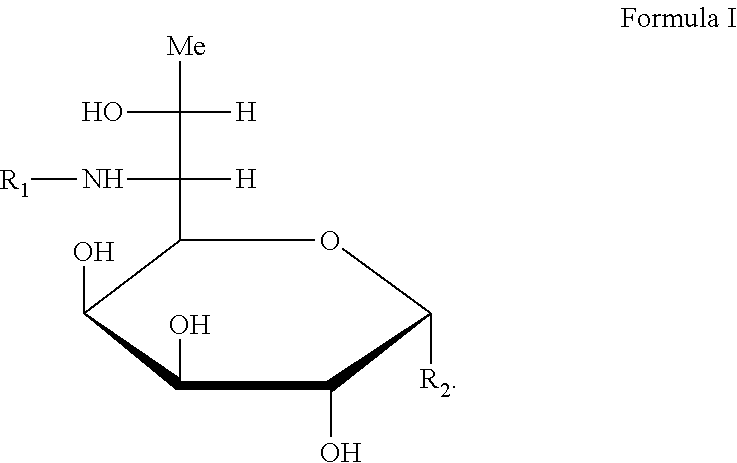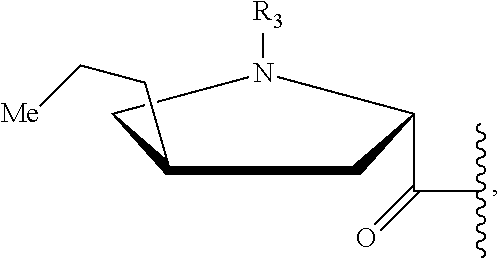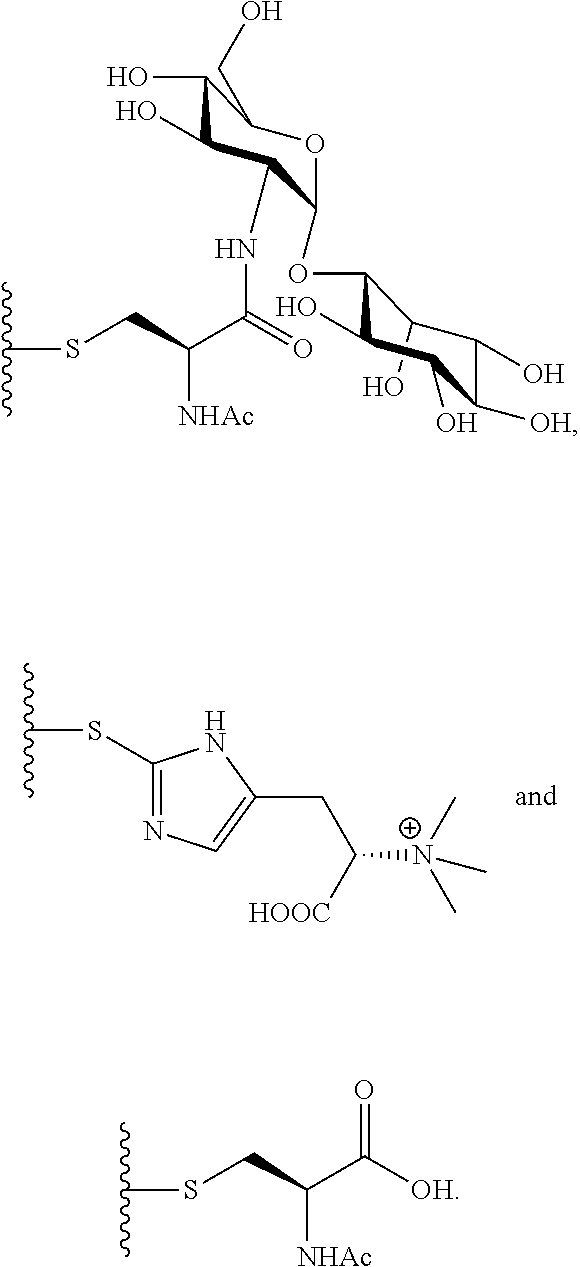Lincomycin biosynthetic intermediates, method for preparation, and use thereof
a biosynthetic intermediate and lincomycin technology, applied in the field of medicine and biotechnology engineering, can solve the problems of limited application of this technology to improve the industrial production strains of lincomycin and few studies on its biosynthetic pathway
- Summary
- Abstract
- Description
- Claims
- Application Information
AI Technical Summary
Benefits of technology
Problems solved by technology
Method used
Image
Examples
example 1
Construction of in Frame Knockout Mutant of Lincomycin
[0126]1. Construction of a Recombinant Plasmid for in Frame Knockout
[0127]Primer Design:
[0128]The primer sequence for the left arm DNA fragment of the PCR clone lmbE gene is as follows:
(SEQ ID NO.: 10)Primer 1:5′-TATGAATTCCACCTTCACCACGCAGCAGTCC-3′(SEQ ID NO.: 11)Primer 2:5′-TATTCTAGACCTTCCCGTACGAGGAGTACAC-3′
[0129]The primer sequence for the right arm DNA fragment of the PCR clone lmbE gene is as follows:
(SEQ ID NO.: 12)Primer 3:5′-TATTCTAGACGAACCGTTCGGGGGTGAAGTC-3′(SEQ ID NO.: 13)Primer 4:5′-TATAAGCTTCCCGTTGCACACGACGTTTCAC-3′
[0130]The primer sequence for the left arm DNA fragment of the PCR clone lmbE3457 gene is as follows:
(SEQ ID NO.: 14)Primer 5:5′-TATGAATTCCTGTTCACCTCCTACGGCGAC-3′(SEQ ID NO.: 15)Primer 6:5′-TATTCTAGAATCCGCGACAAGGCCCTGATC-3′
[0131]The primer sequence for the right arm DNA fragment of the PCR clone lmbE3457 gene is as follows:
(SEQ ID NO.: 16)Primer 7:5′-TATTCTAGAGCGGATCTTCTTCACCAGCTC-3′(SEQ ID NO.: 17)Primer 8:5...
example 2
Fermentation of Recombinant Strains
[0154]1. Seed Activation and Culture
[0155]Spores of recombinant strain preserved at −80° C. were spread on MS medium (mannitol 2%, soybean meal 2%, agar 2%) and cultured at 30° C. for 7 days. Approximately 1 cm2 of agar block containing spores and hyphae was cut out and inoculated into the primary fermentation medium (Soluble starch 20.0 g, Soy flour 10.0 g, Corn steep liquor 30.0 g, Glucose 10.0 g, (NH4)2SO4 1.5 g, CaCO3 5.0 g, pH=7.0), cultured at 30° C. 250 rpm for 40 hours to obtain a seed culture solution for the next experiment.
[0156]2. Enlarge Cultivation
[0157]The seed culture solution was inoculated into the fermentation medium at a seeding volume of 10% by volume (Glucose 100.0 g, Soy flour 25.0 g, Corn steep liquor 2.0 g, NaNO3 8.0 g, NaCl 5.0 g, (NH4)2SO4 8.0 g, K2HPO4 0.2 g, CaCO3 8.0 g, pH=7.0), cultured at 30° C., 250 rpm for 7 days, and the fermentation broth was harvested to obtain a crude product containing a structural analog of l...
example 3
Detection of Fermentation Products
[0158]1 mL of fermentation broth was filtered and centrifuged at 12,000 r / min for 10 min. 300 μL of fermentation broth was pipetted and three-fold diluted with 600 μL mobile phase (5 mM ammonium acetate:methanol=40:60). The sample was fully vortex shaken with vortex, and allowed to stand for 24 h at 4° C., centrifuged at 12,000 r / min for 10 min, 50 and a small amount of supernatant was taken for HPLC and LC-MS detection and analysis. The detection conditions were as follows: Agilent ZORBAX SB-C18 (5 μm 4.6×250 mm) was used as column; 210 nm detection wavelength; the mobile phase was 5 mM ammonium acetate solution:methanol (40:60); constant gradient elution for 17 min; the flow rate was 0.6 mL / min; and the injection volume was 20 μL.
[0159]The test results are shown in FIG. 2. It can be seen from the figure that compared with the wild type, the content of compound 1 in the fermentation product of the lmbE knockout mutant and the lmbE-E3457 double knoc...
PUM
| Property | Measurement | Unit |
|---|---|---|
| temperatures | aaaaa | aaaaa |
| detection wavelength | aaaaa | aaaaa |
| flow rate | aaaaa | aaaaa |
Abstract
Description
Claims
Application Information
 Login to View More
Login to View More - R&D
- Intellectual Property
- Life Sciences
- Materials
- Tech Scout
- Unparalleled Data Quality
- Higher Quality Content
- 60% Fewer Hallucinations
Browse by: Latest US Patents, China's latest patents, Technical Efficacy Thesaurus, Application Domain, Technology Topic, Popular Technical Reports.
© 2025 PatSnap. All rights reserved.Legal|Privacy policy|Modern Slavery Act Transparency Statement|Sitemap|About US| Contact US: help@patsnap.com



